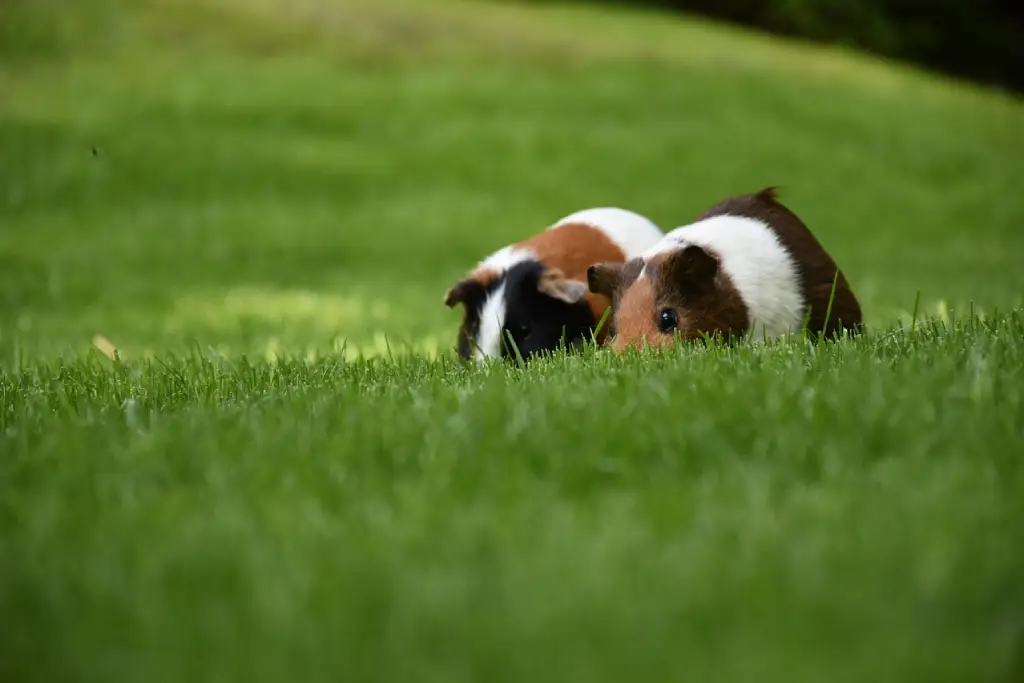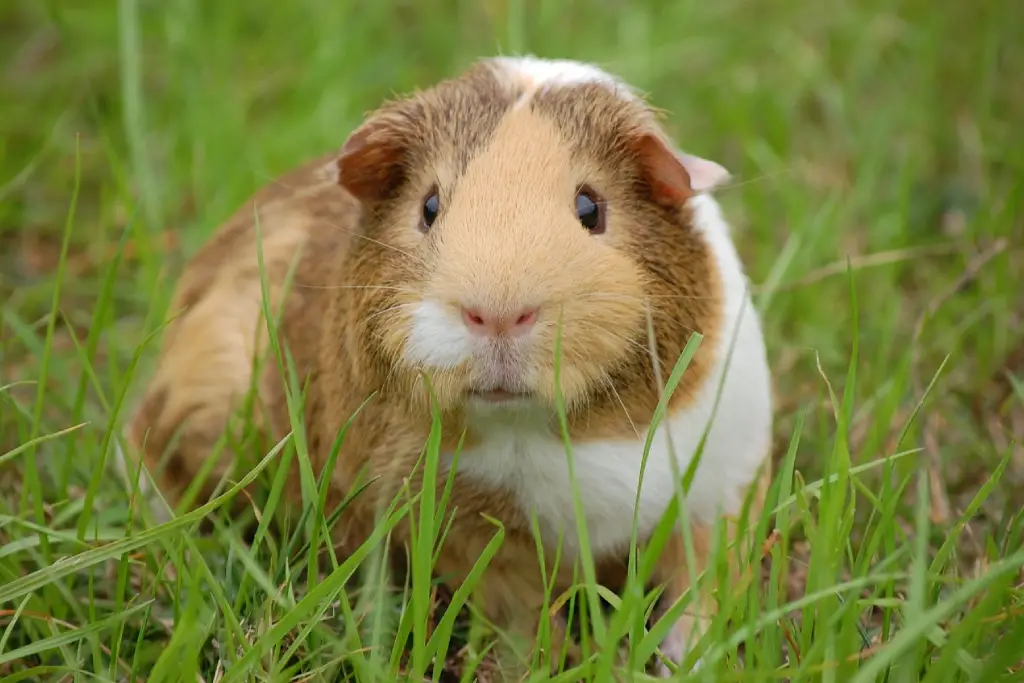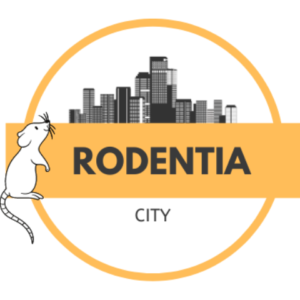Feeding our guinea pigs is a joyful experience in that we sustain their lives while seeing them enjoy the food we provide. There’s a variety of options guinea pigs can eat and one of them are fresh grass. Though fresh grass is an excellent option for guinea pigs, are they healthy?
Guinea pigs can eat fresh grass, which provides Vitamin C, regulates cholesterol, and has low sugar content. The best grasses for guinea pigs are wheatgrass, Bermuda grass, and grass clovers. Avoid feeding guinea pigs wet grass and grass clippings. Add grass to a guinea pig’s diet slowly.
When it comes to dietary options, fresh grass is an excellent option for guinea pigs. Let’s read on and discover why fresh grass is perfect for a guinea pig’s diet.
Why is Fresh Grass Good for Guinea Pigs
The majority of a guinea pig’s diet consists of plant-based resources, making them herbivores. Hay is the most common type of food for guinea pigs.
Despite hay contributing to 80% of a guinea pig’s diet, it isn’t the only meal guinea pigs can and should eat.
Fresh grass is a plant that is easily available and similar to hay’ textures and sometimes tastes. Fresh grass provides some of the healthiest nutrients a guinea pig can eat.
Here are some nutritional facts about fresh grass:
- Vitamin C: For overall health and well-being, guinea pigs must consume enough Vitamin C to keep in proper shape and health. Just like humans, guinea pigs will benefit greatly from Vitamin C as it helps regulates collagen formation, bone density, tissue repairs, and blood vessels.
- Cholesterol regulation: A guinea pig’s cholesterol will maintain a healthy status with fresh grass. An imbalance of cholesterol levels will increase heart and health issues.
- Low sugar content: Fresh grass ensures a guinea pig’s blood sugar levels are healthy. High blood sugar levels, like in humans, can lead to death. Relative to a guinea pig’s size, high blood sugar levels are extremely dangerous.
- Prevents overgrown teeth: When chewing on fresh grass, guinea pigs will benefit from healthy teeth size and shape. This means fresh grass will prevent a guinea pig’s teeth from growing too long and too sharp.
Though fresh grass provides the greatest choice in nutritional benefits, do guinea pigs like it?
Luckily for us, guinea pigs do love fresh grass!
The next question is, how can you prepare fresh grass to feed your guinea pig?
Should Guinea Pigs Eat Lawn Grass

We could simply allow our guinea pigs to move freely on a land of fresh grass such as fresh grass shavings from lawn mowing, however, we don’t recommend leaving your guinea pig free to its own devices.
Before we talk about proper preparation, let’s quickly go over why unclean grass is detrimental to a guinea pig’s health.
Grass that has been exposed to the elements will contain chemicals that are dangerous to the guinea pigs.
For example, weed killers, pesticides, and chemical fertilizers will all leave behind toxic residues that are immediately dangerous to guinea pigs.
Another reason why freshly cut grass isn’t best for your guinea pig is that it may contain allergic components that your guinea pig isn’t used to.
In addition to this, grass attracts molds and when consumed, a guinea pigs will subject themselves to mold poisoning
Lastly, the grass is subject to all other elements other than environmental ones. For example, if you own other domestic animals like dogs and cats, the chances they’ve contaminated the grass with their bathroom business are high.
Now that we’ve discussed why unclean grass is unhealthy, let’s now focus on how we can prepare fresh grass for our guinea pigs.
How to Prepare Fresh Grass for Guinea Pigs
Preparing fresh grass is just as important as feeding it to our guinea pigs.
The best method to prepare fresh grass to feed your guinea pigs is to dedicate an area to only feeding guinea pigs. This means you must enclose an area and ensure that no elements interfered with it such as other pets and chemicals.
If the grassy area is already affected, then never use it. Find a new source of fresh grass that is safe to feed your guinea pigs.
The next best option is to find dedicated markets that sell fresh grass for guinea pigs.
These markets have established methods to ensure only the best and most healthy foods are grown and sold.
Lastly, simply rinse any kind of fresh grass as best as possible and, if possible, get an expert to appraise it before feeding it to your guinea pig.
Other than these methods, there isn’t much else you can do to prepare fresh grass to feed your guinea pig as most available grass outside of market environments has been touched and contaminated.
One may argue that growing fresh grass themselves is possible. While this is true, not everyone will have the availability nor space to do so.
How to Add Fresh Grass to a Guinea Pig’s Diet

When we do have access to fresh grass, we can now add it to our guinea pig’s diet.
As we’ve said earlier, hay consists of 80% of a guinea pig’s diet and should not be replaced. Fresh grass is a supplement to the hay’s benefits.
When incorporating fresh grass into a guinea pig’s diet, do so slowly.
Shifting a guinea pig’s diet immediately will upset its stomach as consuming unfamiliar food may backfire, resulting in a dislike of fresh grass from the guinea pig and digestive upsets.
Start with small quantities of fresh grass and only increase the amount of the guinea pig enjoys it. Or at least eating fresh grass consistently.
Fresh grass can easily be incorporated into other meals as the guinea pig may not be aware of fresh grass being added on.
Overall, the goal is to get your guinea pig familiar with fresh grass to not surprise it the next time you feed it as a non-supplemental meal.
Safe and Unsafe Grass For Guinea Pigs
Fresh grass is a vague term for different kinds of grass that is suitable for a guinea pig’s diet.
Here we will address a few safe and unsafe grass types for the next time you consider feeding your guinea pig.
Here are three safe fresh grass for guinea pigs:
- Wheatgrass: As this name suggests, wheatgrass comes from wheat and is highly nutritious. Some significant benefits are vitamins A and C, potassium, ad fiber.
- Bermuda grass: Originating in Africa and prevalent in Australia, Bermuda grass provides an excellent balance of proteins, fat, and crude fiber.
- Grass clovers: Easy to harvest and harmless to consume, grass clovers are excellent side meals for guinea pigs.
Here are five unsafe fresh grass for guinea pigs:
- Lemongrass: Containing high levels of calcium, lemongrass is not the best option for your guinea pig.
- Pampas grass: Pampas grass contains many natural toxins that are dangerous to guinea pigs.
- Grass seeds: With grass seeds, they contain high amounts of fats which can lead to your guinea pig becoming overweight or obese. If deciding to feed your guinea pig grass seeds, rarely do so.
- Wet grass: Another vague term used for any grass that is wet. Either dry them off or use a dry set of grass. Damp grass is hard to chew for guinea pigs and could possibly result in choking due to this issue.
- Grass clippings: Lastly, grass clippings undergo fermentation quickly, which will cause digestive issues such as bloating.
We hope you’ve gained an understanding of fresh grass as a supplemental meal as well as an understanding of how to incorporate it into your guinea pig’s diet.
Recent Posts
It is no secret that furry little chinchillas are widely considered to be among the cutest of animals alive. Their soft and thick fur coats make them look more like a fuzzy pillow than an animal! One...
Just like pretty much all rodents, chinchillas need to chew on things to keep their teeth at a healthy length. They love to chew on wood, but not all kinds of wood are good for them. So, which types...

